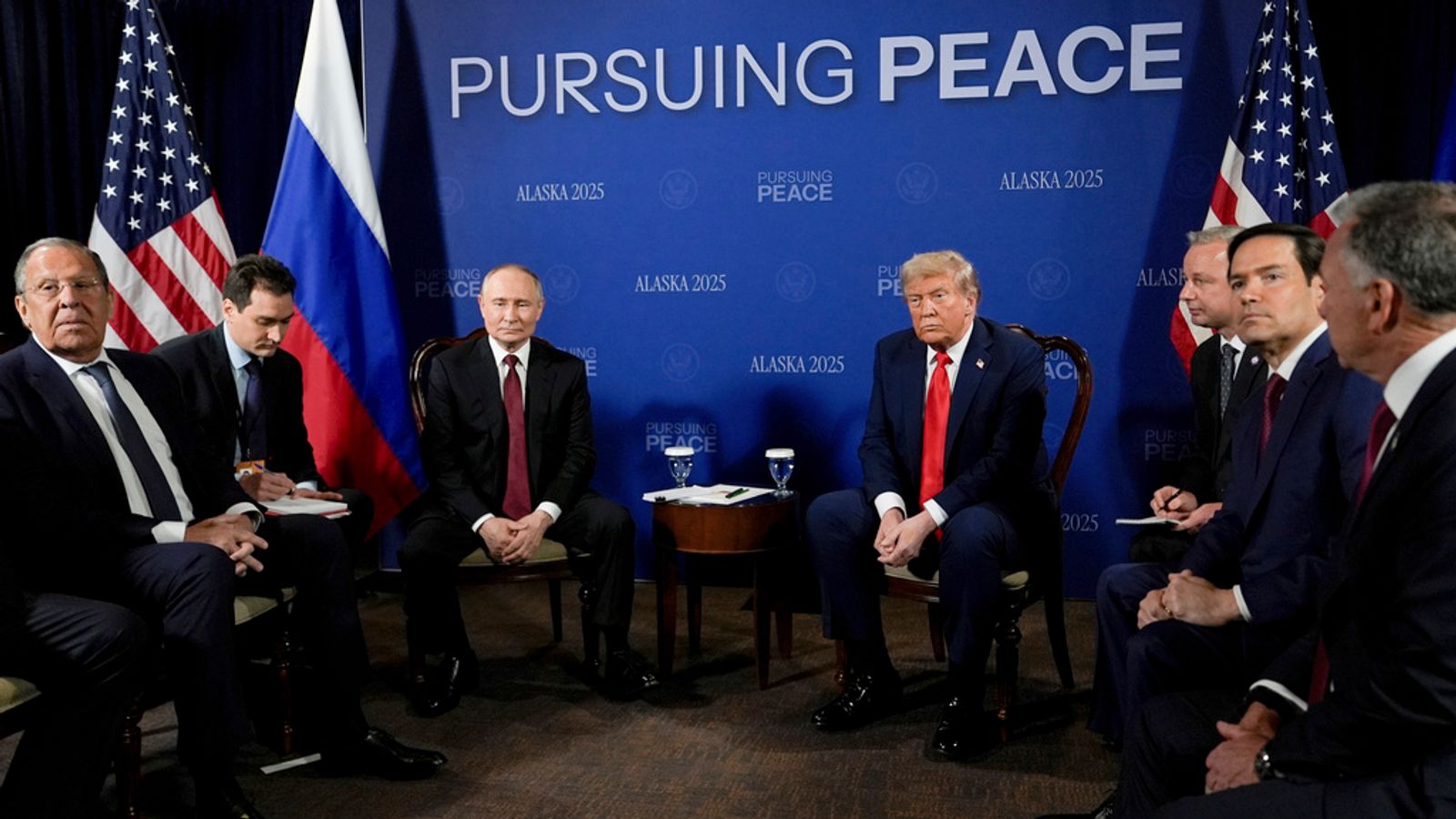News Beat
Why Zelenskyy has to tread carefully over peace plan, or face a Trump ultimatum | World News

If you’re not at the table then you’re on the menu, as the saying goes.
That’s why Ukraine and Europe are so concerned about reports of a new peace plan being drawn up without them.
Their fears appear to be well-founded. The plan’s proposals reportedly include two major concessions for Kyiv – that it must give up territory in the Donbas which Russia has not yet seized, and that it must dramatically reduce its armed forces.
Ukraine war latest: Trump ‘approves 28-point Ukraine peace plan’
Sound familiar? That’s because it is. These are two of Vladimir Putin’s long-held, key demands for peace.
The ‘new’ peace plan represents the latest about-turn from the Trump administration on how it approaches the conflict.
After the failure of the Alaska summit, and last month’s fractious phone call between Russian foreign minister Sergei Lavrov and US secretary of state Marco Rubio (which led to the cancellation of a second summit in Budapest and US sanctions on Russian oil), it seemed like Ukraine had finally convinced Donald Trump to change tack.
Instead of showing Moscow patience, he began applying pressure in the hope of forcing Russia to make concessions and to meet Ukraine somewhere in the middle.
But now it’s all change once again.
The key player seems to have been Kirill Dmitriev – the Kremlin’s investment envoy and a close ally of Vladimir Putin – who has operated as Steve Witkoff’s opposite number in peace negotiations.
Whenever the US special envoy has been in Moscow this year, Dmitriev has always been close by. He is Putin’s Witkoff whisperer.
After the Lavrov-Rubio bust-up, Dmitriev was sent to Miami to supposedly patch things up through Witkoff. He did more than, it seems.
Read more from Sky News:
Witkoff’s ‘secret’ plan to end war
Navy could react to laser incident
What’s reportedly emerged from their discussions is a 28-point peace plan that has been signed off by Donald Trump.
Will Ukraine go for it? I very much doubt it.
If the reports are correct, the US-Russia proposals merely represent the Kremlin’s long-held demands, and Ukraine’s long-held red lines. For Kyiv, it’s a non-starter.
But President Zelenskyy will have to tread carefully. Failure to show engagement could rile Donald Trump and trigger an ultimatum – accept this plan or you’re on your own.












